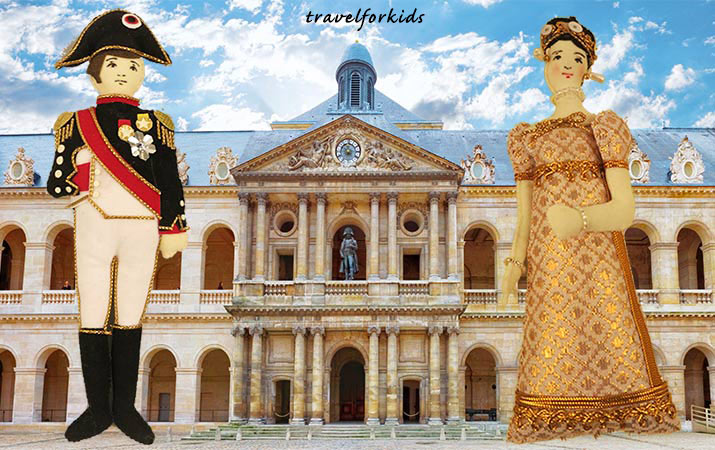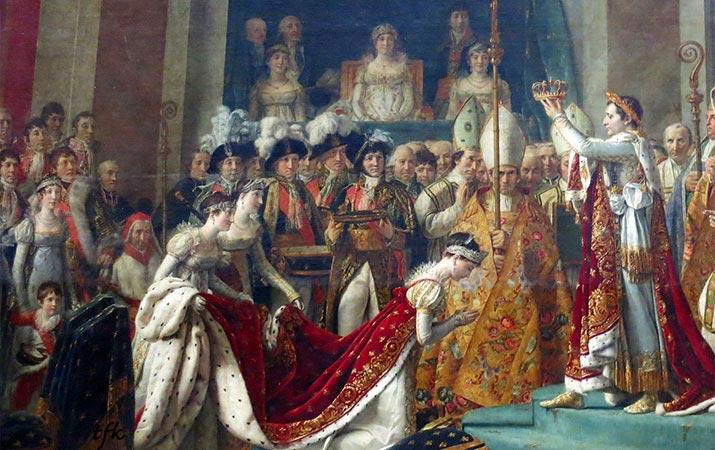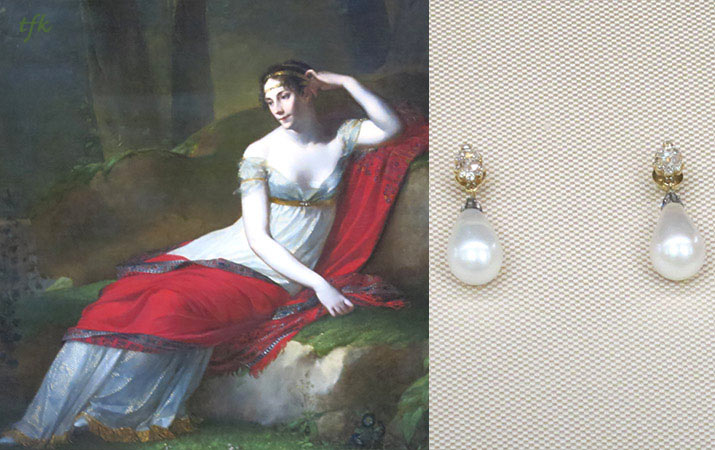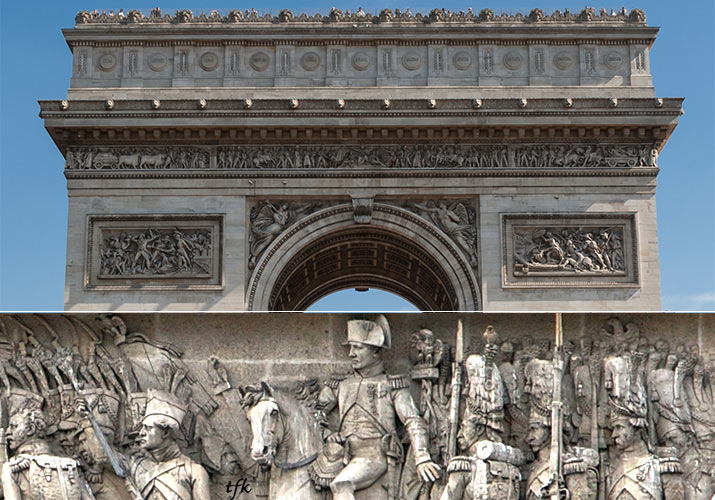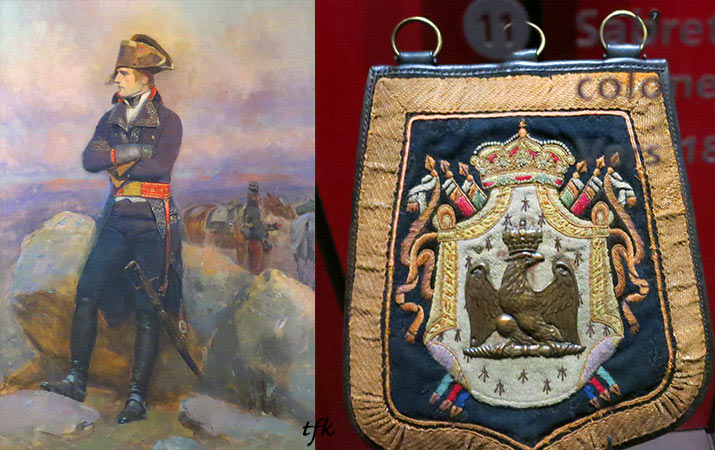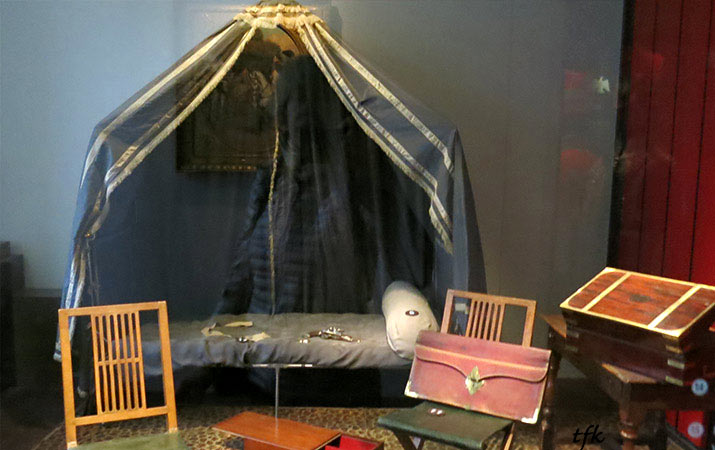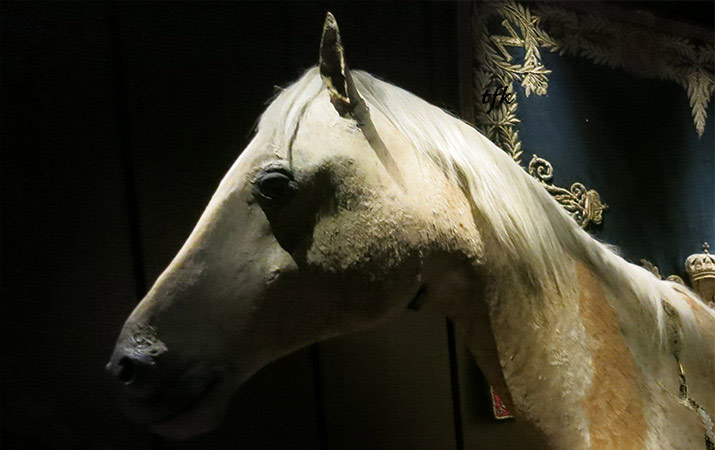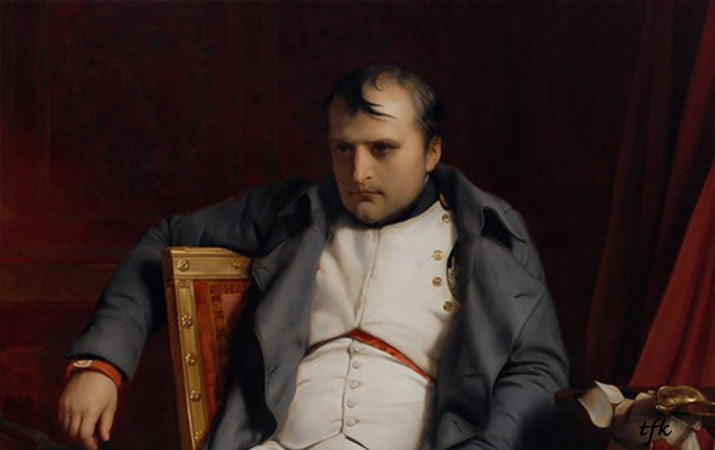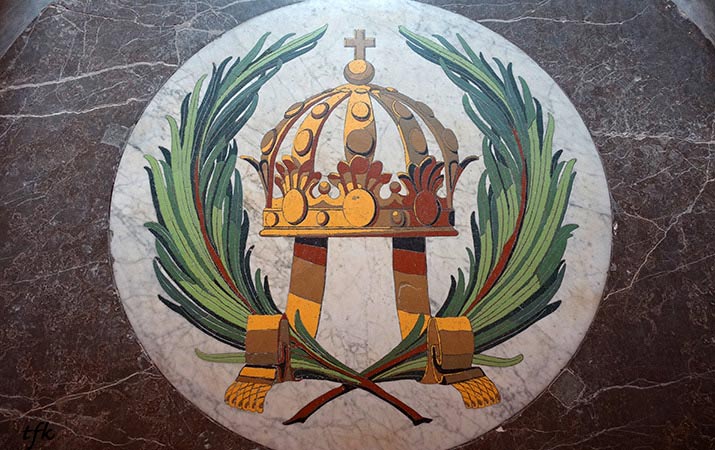Napoleon Bonaparte is a charismatic hero of France, who led a Grand Army to victory, and defeat. He was crowned emperor in Notre Dame Cathedral and is buried at the church at Les Invalides. At its peak, Napoleon’s empire covered more than half of Europe, and Paris was the capital.
Discovering Napoleon in Paris with kids, everything about Napoleon is “larger than life” – monumental paintings at the Louvre, enormous triumphal arches, battle history at the Army Museum (Musee de l’Armee), and Napoleon’s majestic tomb.
Brief history – Born in 1769, Napoleon Bonaparte attended a military school in Paris. A brigadier general at 23, three years later he was promoted to commander of the Army of Italy, and successfully won battles in northern Italy, including conquering Venice. In 1798 Napoleon led a large army to Egypt and fought the Ottoman Turks.
Two years later, Napoleon was the leader of the French Republic. He wrote a new constitution, enacted new civil laws for France, and in 1804 was crowned emperor, his wife Josephine the empress.
Napoleon continued to fight wars, until France controled more than half of Europe. He led a massive army into Russia, but lost most of the army; after more defeats, Napoleon abdicated as emperor in 1814.
A year later, Napoleon gathered a new army, marched to Paris, and led France again to a final battle, and defeat at Waterloo in 1815. He was exiled to a remote island in the Atlantic, and died on St. Helena in 1821.
Louvre Museum
The Louvre Museum (Musee du Louvre) opened to the public after the French Revolution, but Napoleon created a new Louvre Museum, filled with paintings and artworks looted from Italy, Egypt, and other countries in Europe.
In the Louvre, make a beeline for the monumental painting of Napoleon’s coronation on Dec. 2, 1804 (Denon wing 1st floor, room 75).
Napoleon had a splashy ceremony in Notre Dame Cathedral, wore a gold and fur-trimmed robe, and crowned himself emperor. Then he crowned his wife Josephine as empress. Included in the painting are also Napoleon’s family – his mother sits in the center of the balcony, sisters hold Josephine’s train, his nephew is the boy, wearing red at left.
Also in the same room are two other paintings of Napoleon on the battlefield – Napoleon on the Battlefield at Eylau and Bonparte Visiting Victims of the Plague at Jaffa, and a dashing portrait of his fellow officer Joachim Murat.
Empress Josephine was Napoleon’s first wife. Across from the coronation painting (Rooms 75), find Josephine’s portrait by Pierre Paul Prud’hon. She wears a Empire style gown and shawl, sitting out at home in the garden.
Also, in the Apollo Gallery (Galerie d’Apollon, Denon wing, 1st floor, Room 66), in the French crown jewels, look for Josephine’s glowing pearl and diamond earrings.
When you exit the Louvre by the Pyramid, go out to the Tuileries through the Arc de Triomphe du Carrousel. Inspired by triumphal arches of ancient Rome, the arch celebrates Napoleon’s 1805 victories over the Austrians and conquest of Italy. On the upper frieze are Napoleon’s coat of arms – the eagle and crown. Originally on the top of the arch were the four bronze horses Napoleon looted from Basilica San Marco; the horses were returned to Venice in 1815. (The current bronze horses are a later copies, with golden statues of victory on either side).
Arc de Triomphe
At the Arc de Triomphe – Etoile, the most fun thing is to do is climb to the top for panoramic views of Paris. But before going up, bring binoculars, and take a look at Napoleon reliefs on the arch.
On the northeast side, (photo above) is a relief of Napoleon with his soldiers at Austerlitz, his finest victory. On the arch facing the Champs Elysees, check out the relief on the left – Napoleon is dressed in a toga-like garment, wearing a laurel leaf crown like the Roman emperors. On the top frieze are circles with names of winning battles, e.g. Marengo, Pyramides, Rivoli, Aboukir.
Army Museum (Musee de l’Armee)
The Army Museum has exhibits that focus on General Bonaparte, and his legendary battles. Napoleon was supreme commander of the Grand Army (Grande Armee), and he inspired great loyalty from his soldiers. The museum is housed in Hotel les Invalides, a barracks and hospital for veterans in Napoleon’s time.
In 2nd floor galleries “From Louis XIV to Napoleon III” are a complete overview of his military campaigns, including Napoleon’s personal effects. Look for Napoleon’s swords, including the sword he carried at the battle of Austerlitz, and a curvy Egyptian Saber of the Pyramids, plus his hunting rifle and flintlock pistols. Also, Napoleon’s felt hat, decorated with a tricolor, and blue coat with gold embroidery.
Napoleon created his own coat of arms with the eagle, crown, and bees – his emblems were carried by regiments in battle, such as the blue bag above.
On the battle field, Napoleon dressed simply, and slept on a camp bed. One exhibit recreates his camp equipment, with tent, bed, portable writing desk, and clothing. Napoleon wrote dozens of letters every day, even in the midst of battle.
An essential part of Napoleon’s army was the cavalry, Napoleon kept a large stable of horses, and is often portrayed on horseback. One of Napoleon’s horses, Vizir, is in the museum – look for the brand with Napoleon’s N and crown.
In April 1814, Napoleon’s victories were a thing of the past, and he stepped down as emperor. This painting at chateau Fontainebleau shows the defeated Napoleon, who has lost his army, and an empire.
Napoleon I Tomb – Dome des Invalides
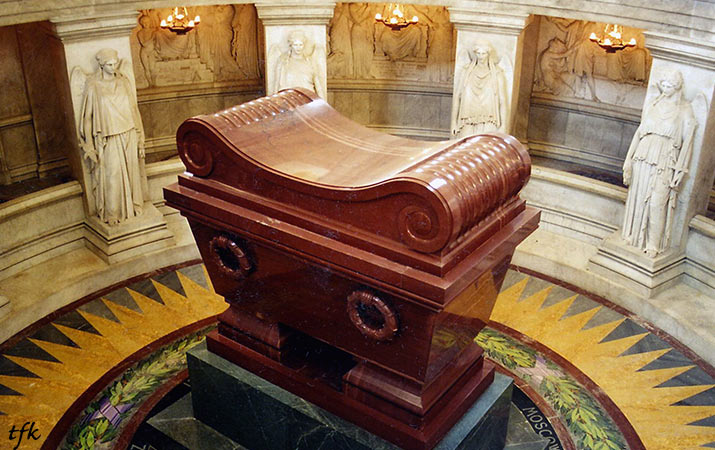
Napoleon Bonaparte died in 1821 and was buried on the island of St. Helena. In 1840, he was re-buried in Paris, here at Domes des Invalides, a church for French heroes. The monumental red sarcophagus was transported by barge up the Seine, and then put on a golden coach with twelve white horses. As the coach passed through the streets of Paris, people in the crowd shouted “Vive la Grande Armee.”
In the Dome des Invalides (Dome Church) Napoleon’s red sarcophagus shaped like those in ancient Rome, sits high up, surrounded by twelve figures of Victory, a reminder of Napoleon’s successful conquests.
Look on the floor for three ornamental mosaics – a crown, an eagle, and medallion with his portrait and words – “Napoleon Emperor des Francais.”
Tip: On Travel for Kids, more fun things to do with kids in Paris, and check out our list of Paris family hotels.

